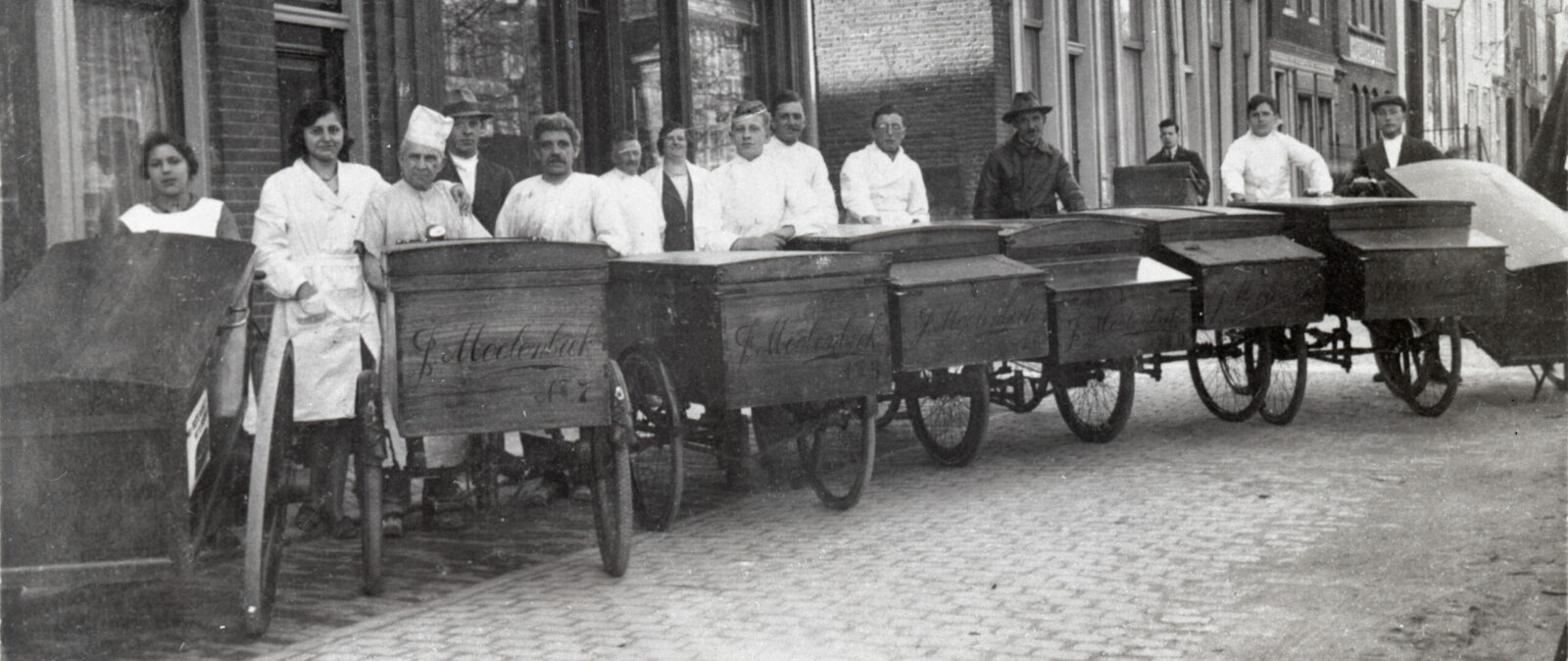Research Network ‘Life-courses, Family, and Labour’
The network ‘Life-courses, Family, and Labour’ aims to bring together the fields of demographic and labour history to better understand the long-term development of populations, households, and the gender division of labour from the early modern age until the present.
Research directors
Dr Sanne Muurling (Radboud University Nijmegen)
Dr Evelien Walhout (Leiden University)
Description
This network uses the household as the central unit of analysis to answer micro and macro questions about changes in demographic behaviour and the labour market. It explicitly applies a gender lens to better understand these developments. By discerning patterns in the development of populations, economic structures, and the gender division of labour, our network contributes to understanding historical as well as present-day societies.
Focus points
The key questions within this network centre around three main themes:
- The three phases of the demographic transition: a Malthusian (high birth and death rates), an intermediate (population growth), and a neo Malthusian (low birth and death rates) phase. Demographic transition theory has traditionally been tested at a high level of aggregation. We study the transition on the micro-level, using individual data, to better understand when, how, and why countries from all over the world have experienced, or are currently experiencing, the demographic transition.
- Migration history. Although the media present the 21st century as an age of migration, people have always been on the move. With the help of register data migration trajectories of individuals and families can be ‘reconstructed’ and analysed. This increases our understanding of the agency of migrants across time and space, as well as the constraints they were confronted with. By comparing demographic and labour market behaviour of migrants and natives, processes of social inclusion and exclusion can be analysed. On a higher level of aggregation, the study of migration history enhances our understanding of the opportunities and challenges migration poses to sending and receiving areas.
- Gender inequality in the labour market. Households’ demographic behaviour, such as age at marriage, and the timing and number of children, affected the labour division of husbands and wives and thus, indirectly, the composition of the aggregate labour market. At the same time, labour market opportunities and shifting economic structures affected households’ demographic behaviour, including migration. This interrelationship shaped women’s opportunities and their actual position in the labour market and the household. Researching this relationship is thus crucial for understanding the long-term development and the determinants of gender inequality. Therefore, collecting empirical evidence on women’s work and remuneration is high on the research agenda of this network.
Concepts and data collection
There are three central concepts used within this network:
- The life-course: lived experience of individuals is collected and stored in a standardised way that allows for comparisons across cohorts, social groups, and cultures. It enables the study of the interrelation of different domains of life: education, work, residence, and family. This concept thus integrates the fields of demographic, migration and labour history.
- The concept of strategies helps us to understand the conscious and less conscious actions of individuals in their adaption to changing economic, social, political, and cultural structures.
- The concept of life-cycle events links individuals to the context of their households, which deepens our understanding of the role of intrahousehold decision making in broad societal transitions.
The scholars within this network also contribute to improving data collection and infrastructure. The study of populations and labour markets requires vast investments in large databases containing data that can be analysed at all levels of aggregation.
Examples data collection and research projects
- Race to the bottom? Family labour, household livelihood and consumption in the relocation of global cotton manufacturing, ca. 1750-1990, Professor Elise van Nederveen Meerkerk (Utrecht University)
- HSN LINKS, CLARIAH and CLARIAH-PLUS, led by Professor Jan Luiten van Zanden (Utrecht University)
- Lifting the burden of disease. The modernisation of health in the Netherlands: Amsterdam 1854-1940, led by Professor Angélique Janssens (Radboud University Nijmegen / Maastricht University) and Professor Jacco Wallinga (LUMC / RIVM)
- Giants of the modern world. A new history of heights and health in The Netherlands, 1811-1940, led by Professor Jan Kok, Professor Angélique Janssens (both Radboud University Nijmegen), Professor Maarten Lindeboom and Dr France Portrait (both Vrije Universiteit Amsterdam)
- Inequality, Migration and Social Relations in Urban Brabant and Flanders, c. 1350-1914, led by Dr Anne Winter and Dr Wouter Ryckbosch (both Vrije Universiteit Brussel)
- Constructing SHIP: towards a comparative history of health and disease in European port cities, 1850-1950, led by prof. dr. Angélique Janssens (Radboud University Nijmegen)
- Who died from cancer? A history of victims of malignant tumors in Belgium (1850-1950), led by Dr Isabelle Devos (Ghent University)
- S.O.S. Antwerp (Sociale Ongelijkheid in Sterfte), led by Dr Isabelle Devos (Ghent University)
- Coping with decline: Comparative social-historical analysis of depopulation and community welfare in Europe, 1950-2022, led by Dr Yuliya Hilveych (University of Groningen)


